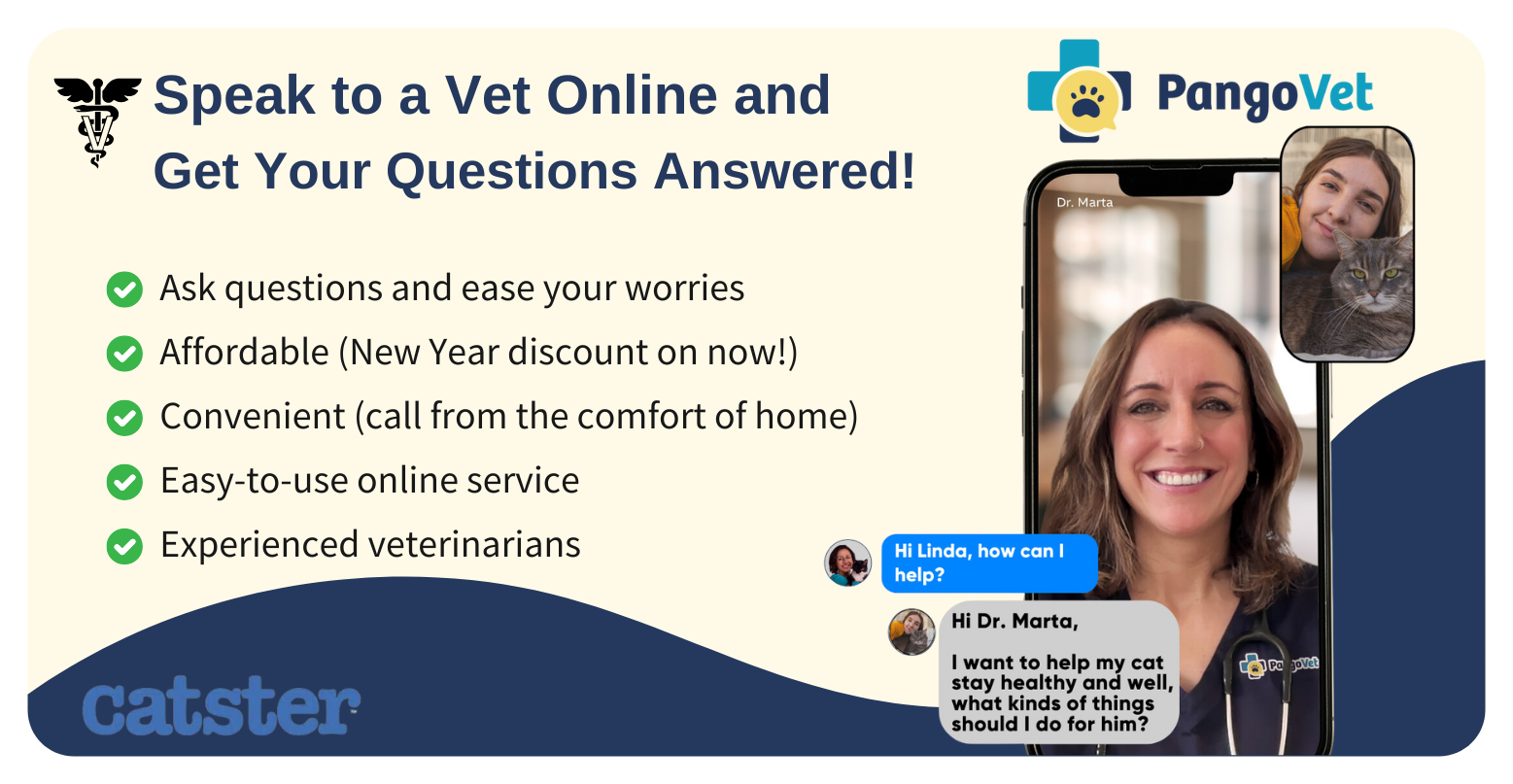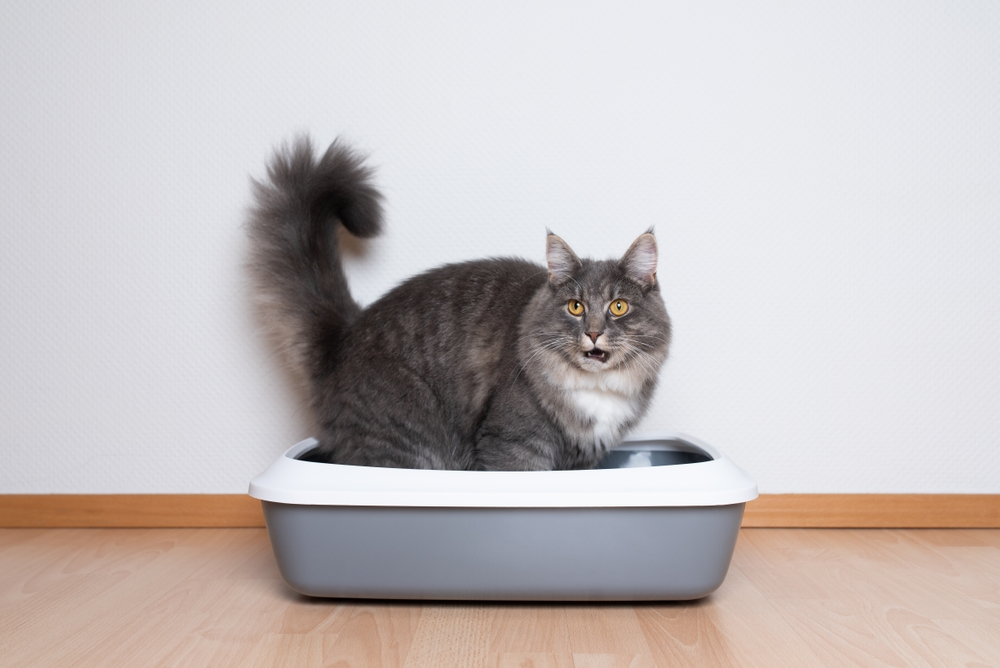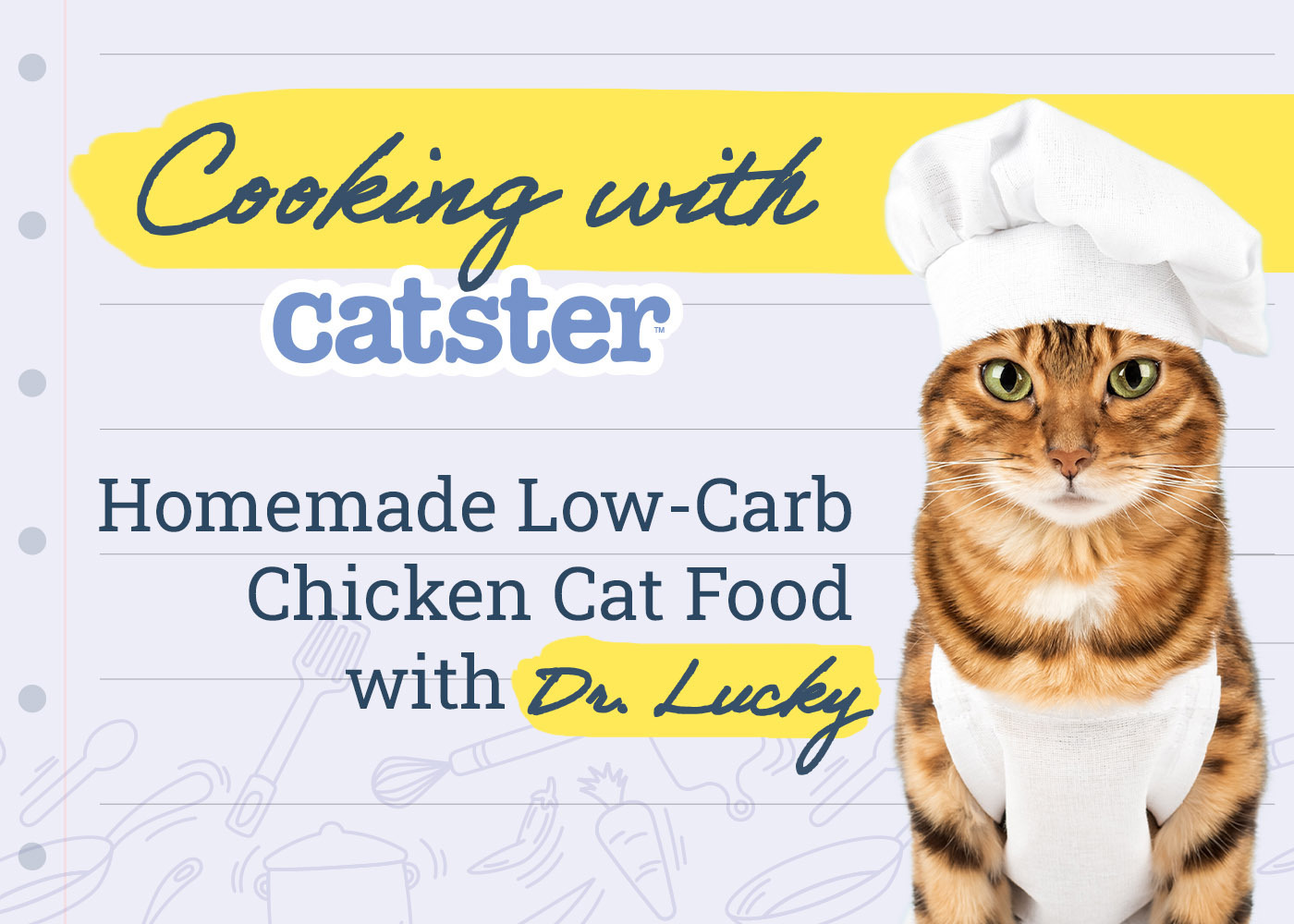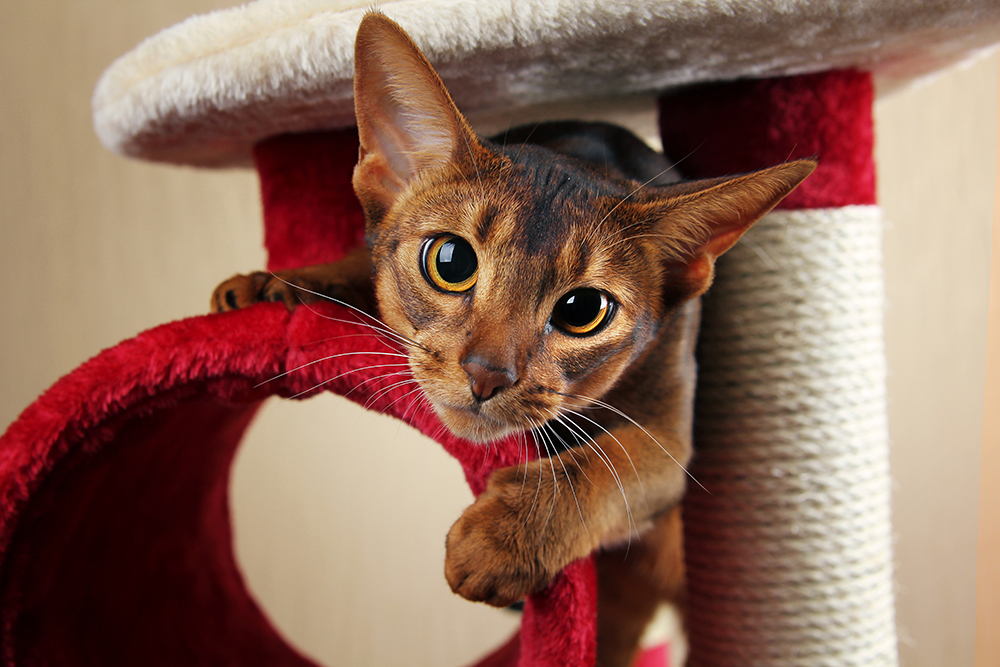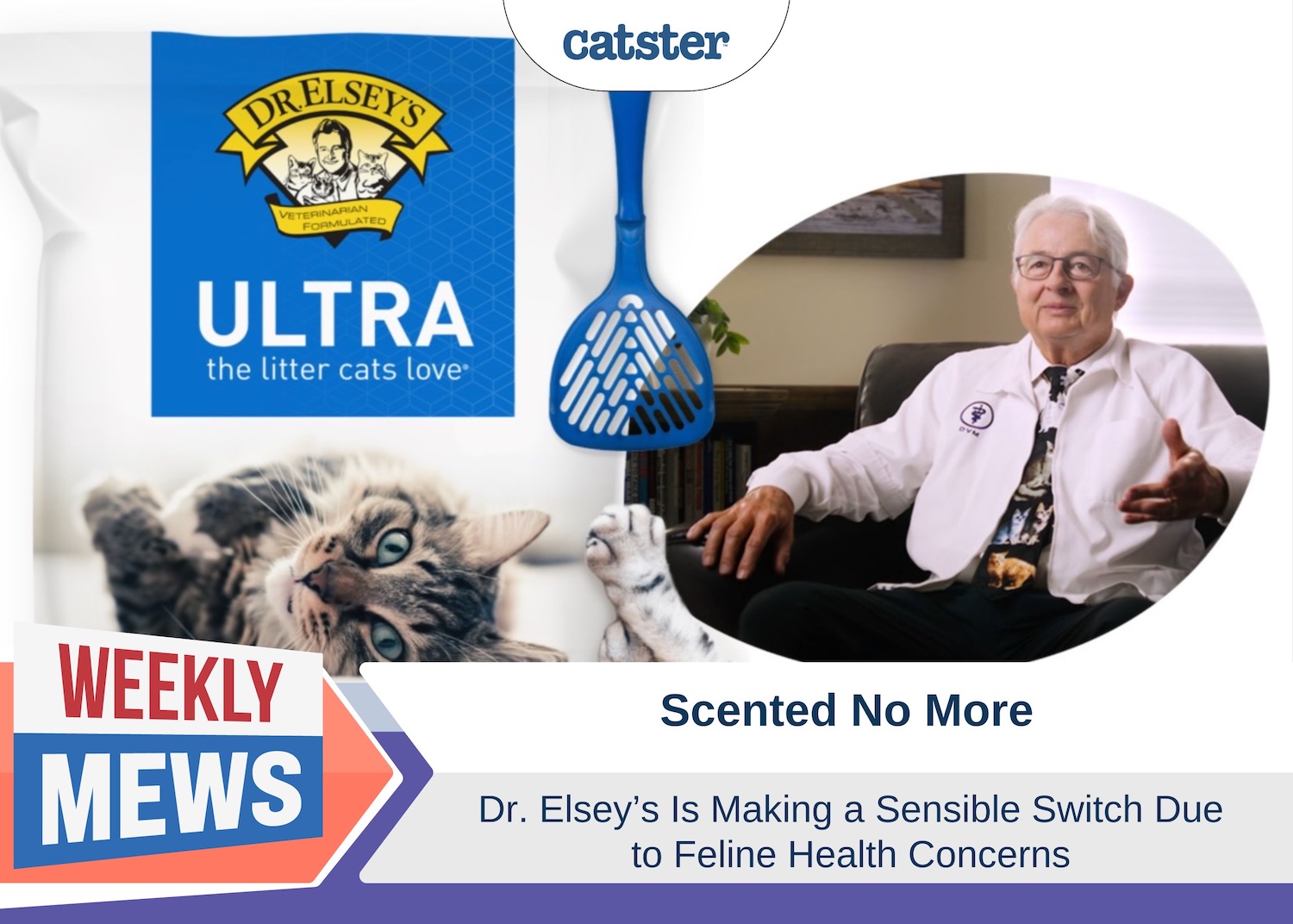Click to Skip Ahead
Spam, stylized as SPAM, is a brand of processed canned meat (originally pork and ham) made by Hormel Foods Corporation. The term SPAM is an anagram for the phrase “Sizzle Pork And Mmm”. Despite SPAM tasting yummy to us, it is not something you should feed your cat. Even though most varieties of SPAM are not poisonous or toxic to cats, it contains a number of ingredients that can deter your cat’s health if they consume it over a large portion of time.
To get a better understanding of whether or not your cats can eat SPAM, keep reading. In this article, we thoroughly explore whether or not cats can eat SPAM.

Can Cats Eat SPAM?
The answer to this question is complex, as there are several varieties of SPAM, and whether or not a particular variant is safe for cats depends on its ingredients. As a general guideline, here is a summary of the popular varieties of SPAM.
- SPAM Oven Roasted Turkey – Contains safe ingredients and has a favorable ratio of protein to fat.
Please note that while the Roasted Turkey option is the best when compared to other SPAM varieties, it’s still not nutritionally healthy for cats.
- SPAM Classic
- SPAM Lite
- SPAM 25% Less Sodium
- SPAM with Real HORMEL Bacon
- SPAM Teriyaki
None of these products are toxic for cats; however, they are very unhealthy in terms of their nutritional yield.
- SPAM Maple Flavored
- SPAM Hickory Smoke Flavored
- SPAM Hot & Spicy
- SPAM Jalapeño
- SPAM With Tocino Seasoning
These products contain seasons or flavorings that can be harmful to your cat, as their safety in pets hasn’t been assessed. They are, however, safe for human consumption.
If your cat snuck a bite or two of SPAM when you were not looking, whether or not you should be worried depends on the product itself.
It can definitely be overwhelming keeping up with all the different varieties of a product to ascertain if something your cat ate is harmless or whether or not you should take them to the vet right away.
As a general rule, almost all SPAM products are very unhealthy in terms of their nutritional composition, and some might contain flavorings or ingredients that cats shouldn’t have. Cats would not be deprived of nutrition if they aren’t fed SPAM. Therefore, it’s best to not include SPAM into your cat’s diet as a conscious decision.
Instead, you should look for species-appropriate treats for your cat that wouldn’t cause unnecessary complications or worry.
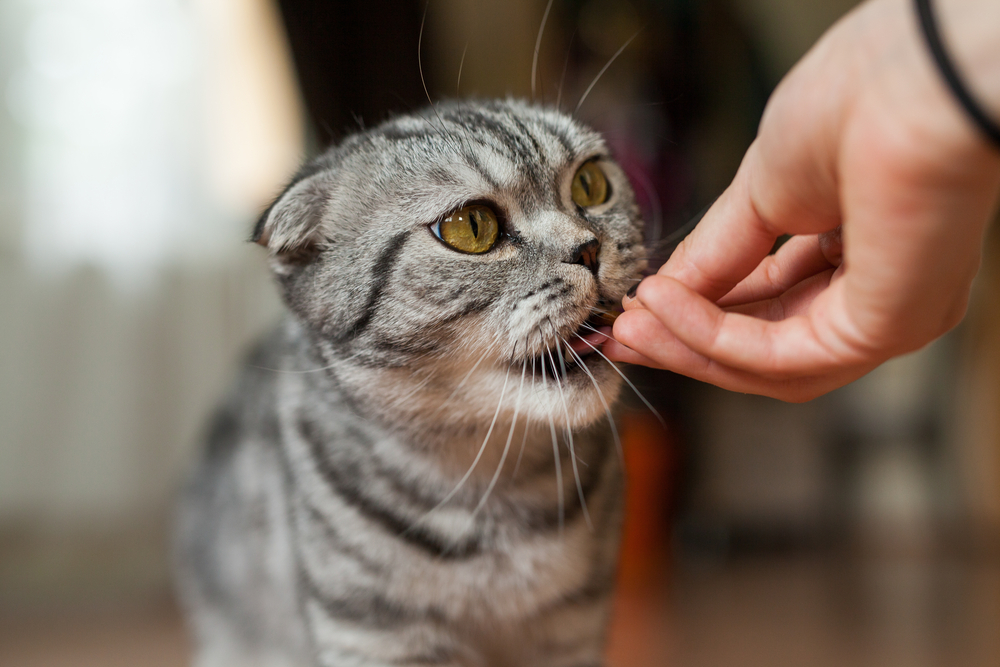

Ingredients in SPAM that Are Unhealthy for Cats
SPAM contains a combination of pork, water, salt, sugar, potato starch, and sodium nitrite as its primary ingredients. Each of these components serves a purpose in providing nutrition, preserving the product, or enhancing its flavor, but not all are safe or suitable for cats to consume. Here’s a closer look at these ingredients and their potential risks:
1. Pork
Pork, the main ingredient in SPAM, is a protein source that cats can eat and digest. However, the pork in SPAM is heavily processed, which reduces its nutritional value. While small amounts of unseasoned, cooked pork meat are safe for cats, the processed nature of SPAM makes it less ideal for feline diets.
2. Salt
SPAM is exceptionally high in salt, which is problematic for cats. While salt is necessary for cats to maintain their body functions, it’s not recommended or necessary for them to ingest foods high in sodium. Moreover, too much salt can be toxic to cats, developing salt toxicosis.
Signs of sodium poisoning include:
- Vomiting
- Diarrhea
- Lethargy
- Incoordination
- Excessive thirst
- Tremors
- Seizures

3. Sugar
Sugar is unnecessary in a cat’s diet and offers no nutritional benefit. Sugar is not toxic, but it’s simply not necessary. Furthermore, cats even lack the taste receptors necessary to enjoy it, so there’s really no point in feeding them sweet foods!
4. Potato Starch
Potato starch is a carbohydrate used as a thickener and binder in SPAM. While not toxic to cats, it is not an essential part of their diet, as cats are obligate carnivores and require a meat-based diet.
5. Sodium Nitrite
Sodium nitrite is a preservative used to maintain SPAM’s shelf life and color. While small amounts are generally safe, excessive consumption can pose risks to cats. Sodium nitrite has been associated with oxidative stress and the potential formation of harmful compounds in processed foods.

Risks of Feeding SPAM to Cats
Feeding SPAM to cats can pose several health risks. Here’s a breakdown of the potential dangers:
Obesity
SPAM is incredibly calorically dense, making it easy for cats to consume more calories than they expend. This high caloric yield can contribute to weight gain, which is a growing issue among felines. The fatty nature of SPAM makes it particularly unhealthy for cats if fed regularly.
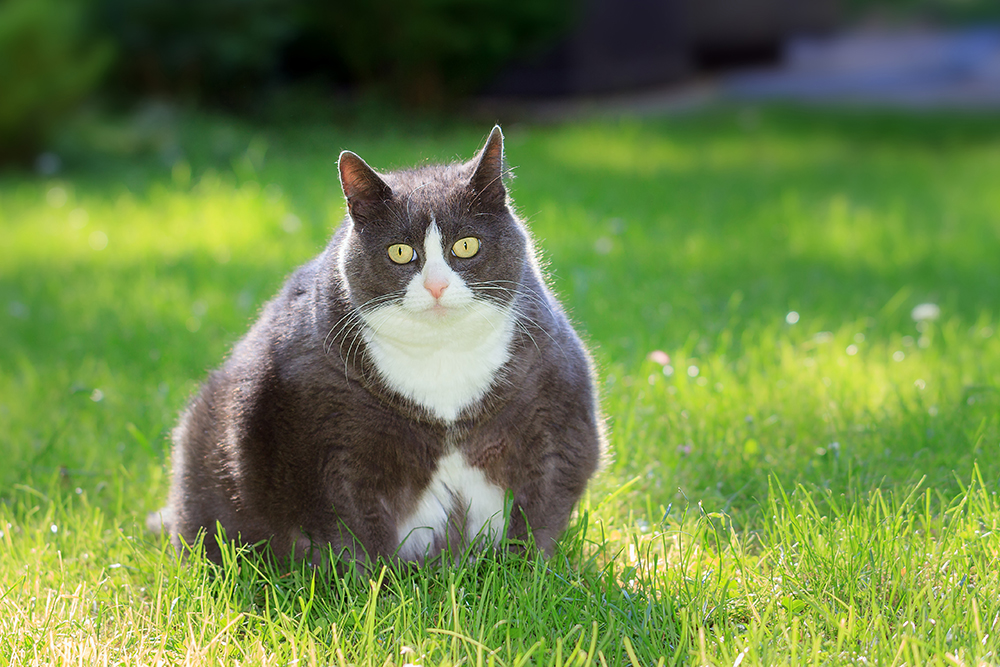
Gastrointestinal Issues
Many SPAM products contain flavorings and preservatives that are safe for humans but not intended for animal consumption. Depending on the specific product and the amount consumed, cats may experience gastrointestinal upset, leading to signs such as vomiting, diarrhea, nausea, or lack of appetite.
Nutritional Imbalance
SPAM is not formulated for cats and lacks the essential nutrients they need for optimal health. Regularly feeding your cat SPAM can lead to nutritional deficiencies or imbalances that may affect their overall well-being.

What to Do If Your Cat Eats SPAM
If you are making your favorite lunch and your cat happens to take a bite or eat the entire can of SPAM while you are not looking, you should double check the ingredients on the product. If your product doesn’t contain toxic or dubious ingredients, your cat should likely be fine. However, it would still be a great idea to monitor them closely for any signs of distress.
Because of how salty and savory SPAM is, your cat is likely to love it. If you are worried about your cat consuming too much SPAM at one time, you can call your veterinarian and talk to them about what to do. With most varieties of the product though, a small bite shouldn’t be too worrying.
If you need to speak with a vet but can't get to one, head over to PangoVet. It's an online service where you can talk to a vet online and get the advice you need for your pet — all at an affordable price!
It is important to remember that even safe-to-consume SPAM may cause a negative consequence on your cat’s health if your cat eats SPAM consistently over a long period of time. For example, feeding your cat SPAM for dinner every night can have serious long-term consequences.
If you have been feeding your cat SPAM consistently for some time, you should understand that doing so isn’t in your cat’s best interest, and this is definitely something you should stop doing. You may also want to talk to your vet to make sure your cat is in good health. Listen to your veterinarian if they give you any recommendations about your cat’s wellbeing.

What to Feed Your Cat Instead
Cats are carnivores at heart, meaning that they require a lot of animal protein for optimal health. Because of how common cats are in households today, you will be able to find a variety of commercial cat food at just about any grocery store you go to.
However, not all commercial cat food might be appropriate for your pet, as their needs will change depending on factors like their age, sex, size, neuter status, level of activity, and overall health status. It is important to find high-quality cat foods that aid your cat’s health while keeping them full and satisfied. You can talk to your vet for recommendations. They may also know of cat food selections for cats with specific needs or illnesses.
- NO MESS - The 360° tray on this cat food and water bowl set has a raised design to catch and...
- WHISKER FRIENDLY - Shallow and wide metal containers with flat bottoms ensure your kitty can enjoy...
- CHEW-SAFE MATERIALS - Kittens and cats love chewing on silicone and soft rubber - but it's a choking...
Learning about what your cat can and cannot eat is a crucial part of keeping them happy and healthy! Choosing a bowl to serve cat-friendly foods in is another important decision pet owners face. Satisfy the specific needs of your cat with the innovative design of the Hepper NomNom Cat Bowl. Learn why it’s our (and our cats!) favorite food and water dish here.
At Catster, we’ve admired Hepper for many years and decided to take a controlling ownership interest so that we could benefit from the outstanding designs of this cool cat company!

Other Foods to Avoid
Even though most varieties of SPAM are not toxic for your cat, there is a long list of foods you should not feed your cat. It is generally a better idea to only feed your cat food or a meal plan approved by your vet. Foods meant for human consumption, especially processed food, vegetables, and fruits, are unnecessary and potentially dangerous.
Here are the most important foods to avoid feeding your cat:
- Expired Pet Food
- Caffeinated products
- Chocolate
- Fruit seeds
- Fruit stones (like a peach pit)
- Grapes
- Raisins
- Milk (most cats are lactose intolerant)
- Mushrooms
- Avocado
- Alcohol
- Nuts
- Onions
- Garlic
- Raisins
- Any candy or processed foods meant for human consumption

Final Thoughts
Even though most varieties of SPAM are not toxic to cats, you would be wise to avoid feeding this canned meat to your lovable feline. SPAM is considered unhealthy for cats, and it may lead to obesity and other negative health effects over time. However, if your cat manages to sample a small amount of SPAM while you’re not observing them, they would likely be okay. It is still best to consult your veterinarian if you suspect that your cat doesn’t seem well after having some SPAM.
Related Reads:
Featured Image By: Lyskionva Irina, Shutterstock


